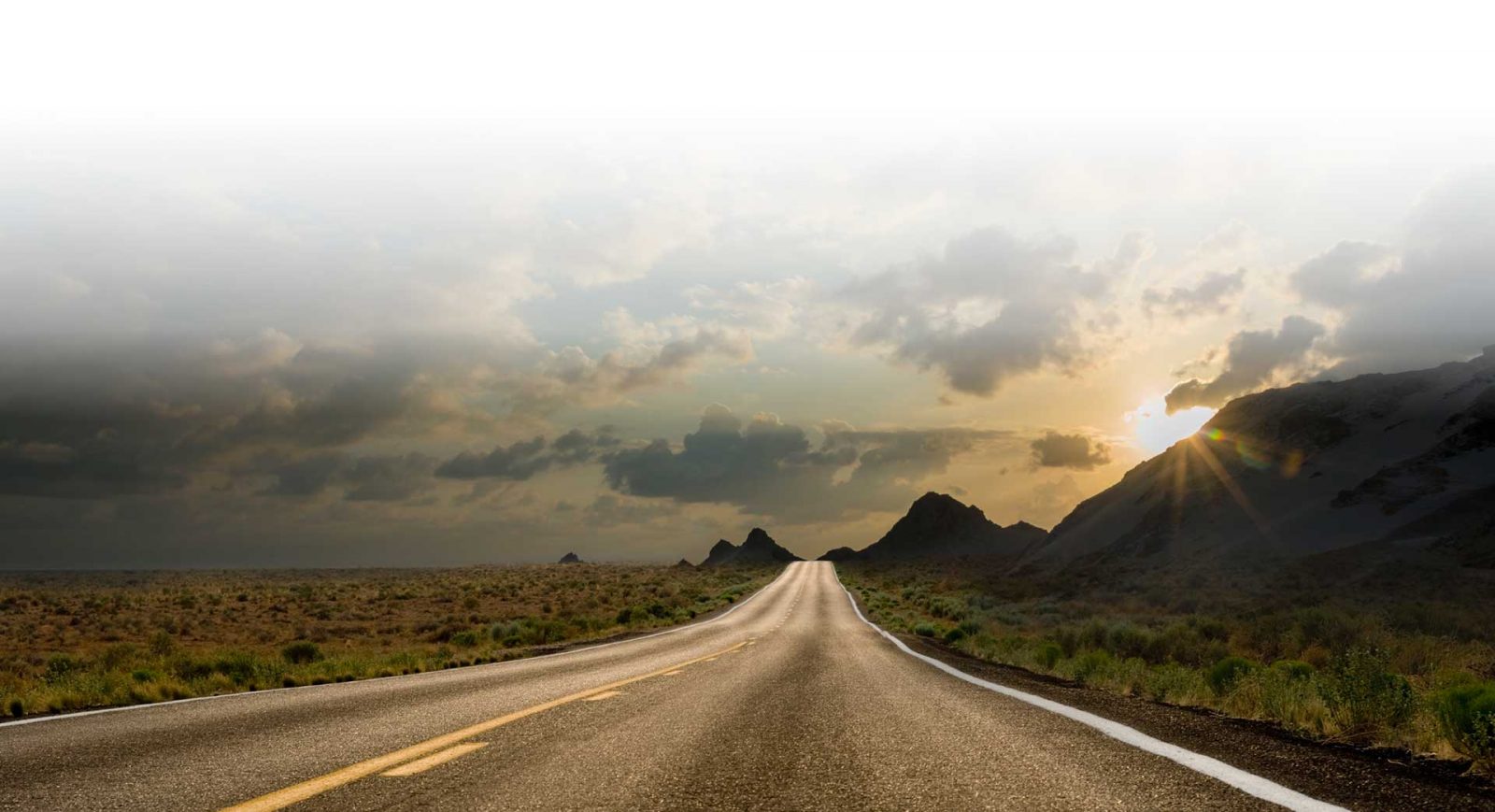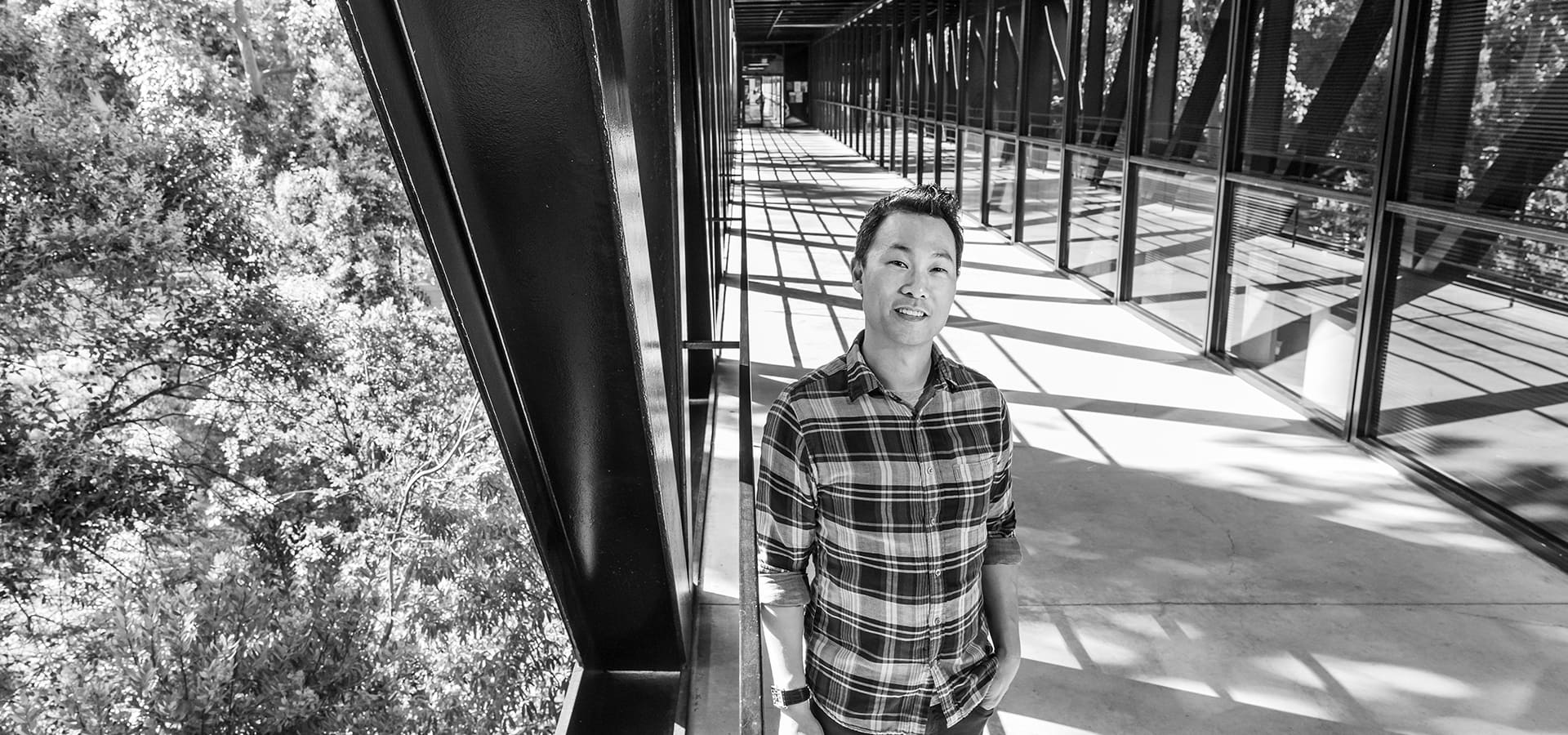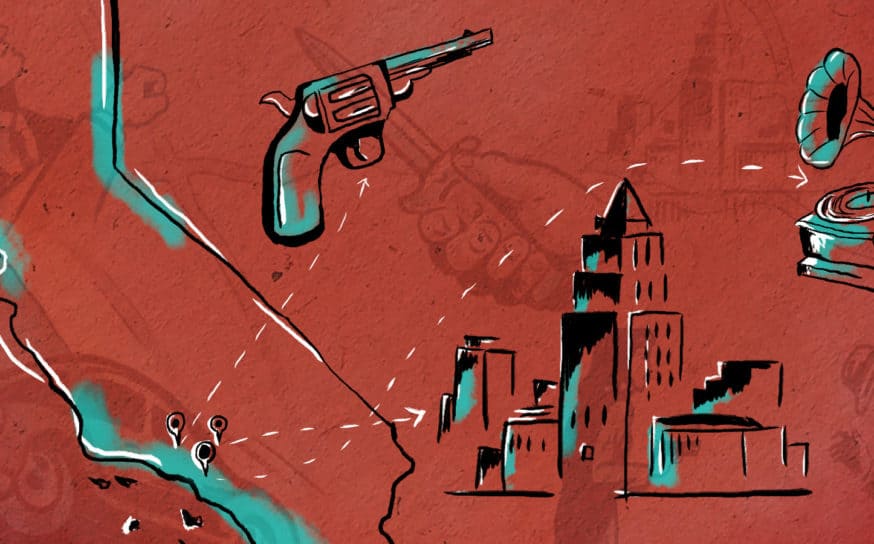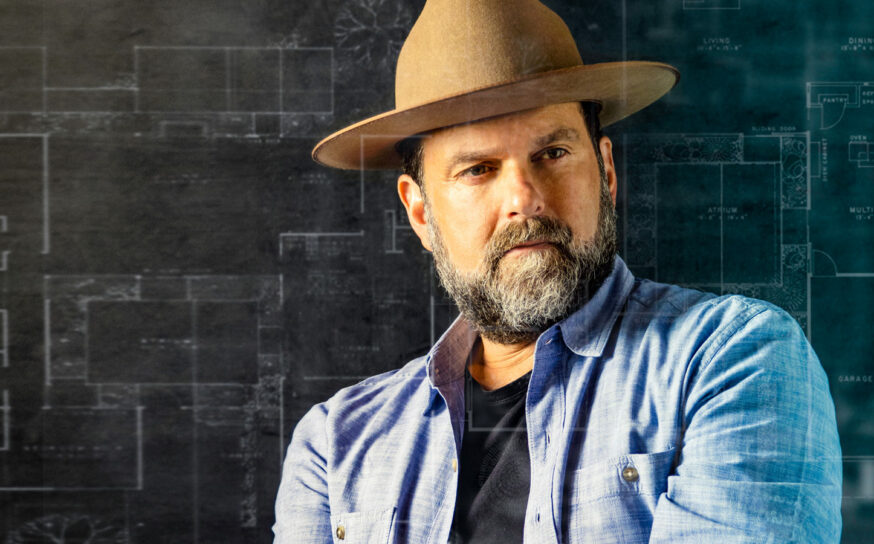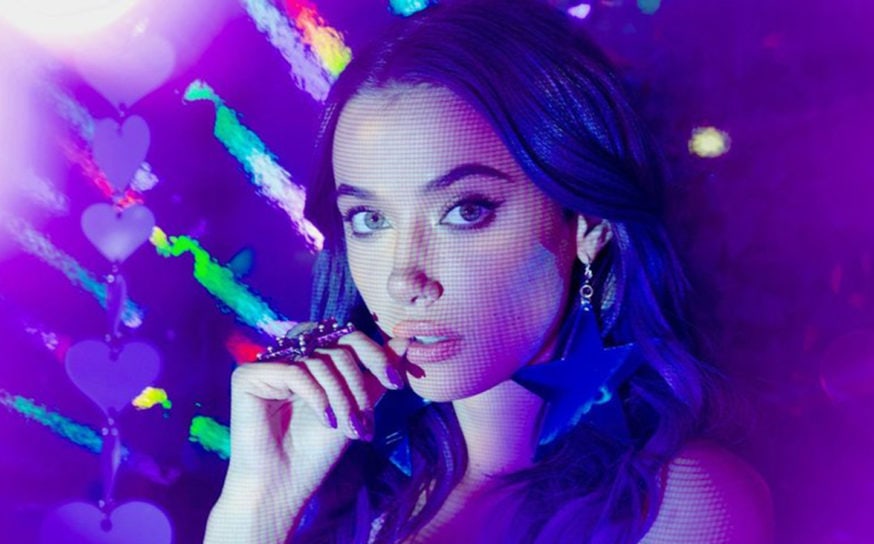From Tesla to Teacher, Bernard Lee Is a Champion of Smart California Design
A founding member of the Tesla Design Studio reflects on our state’s car culture, technological advances, and Korean BBQ.
-
CategoryMakers + Entrepreneurs, Sustainability, Tech
-
Interviewed byBonnie Graves
-
Photographed byMonica Orozco
Who’s the coolest person I met recently? Bernard Lee. This innovative young car designer spent a decade designing all the fancy Teslas you now see zooming by you in the HOV lane on the 405. The son of Korean immigrants, Bernard seemed destined for a medical career until a childhood fascination with Matchbox cars intervened. Encouraged by teachers and by his mom who had a thing for cars herself, Bernard was one of the founding members of the Tesla Design Studio at a time when no one was sure that electric vehicles and luxury could be integrated successfully.
In those early years, Bernard confesses that he sometimes kept a sleeping bag under his desk in keeping with the legendary Tesla workaholic lifestyle. But fate in the form of a gorgeous childhood friend, a subsequent marriage and cute young son came calling, and while Bernard is excited to return to car design eventually, he has recently taken a break to spend more time with his growing family. And as a man whose elementary and high school teachers believed his Matchbox sketches and considerable brain power could work wonders, Bernard has returned to his alma mater to teach design to a new generation of smart kids. I recently caught up with Bernard, or Bernie to most, to chat about cars, climate change and California commuting.

Tell us a little bit about your family background. I understand your parents emigrated to the U.S. from Seoul in 1973. What ultimately brought them to Los Angeles?
Bernie Lee: When my parents first immigrated to the States, my father was doing his medical internship at Yale University. I was born there and then we moved to New York. When my dad was finished with his training, my mom was the driving force that moved us to California.
I was three at the time. She really didn’t enjoy the weather on the East Coast. In addition, she was always an avid fan of American movies and Hollywood. Her favorite movie was The Graduate, so she loved California and dreamed that one day I would attend UC Berkeley. I never fulfilled that dream, but my younger sister did!
How did you come to specialize in car design? It seems like such an LA thing. Were you always inclined toward math and engineering?
BL: My path to becoming a car designer started at a young age. My parents were pretty poor when they arrived so they had to be very frugal. But the one thing that my mom would indulge in was her interest in cars. So she would walk to the local department store and for less than a dollar, she could buy Matchbox cars. These Matchboxes ended up being my first toys growing up. They were my favorite.
When I was around four, my father took one of my toy cars and sketched it for me. I was very impressed, so I ran to my room and grabbed several more for him to draw. I think it was after the third or fourth car that he told me to draw it on my own. So I did and that started me on a path to do it as a hobby. When I was 12, I was caught drawing cars in class by my teacher. Instead of scolding me, she held up my drawing and told me it was pretty good. She continued to tell me that I could do this for a living like her son. My teacher planted a seed and that started my path to Art Center College of Design in Pasadena. Fortunately, that school was nearby and I took night classes there when I was still in high school. My parents wanted me to become a doctor but, once I took my first class at Art Center, I knew this was my career path.
Many years later when I started working for Honda, I ran into someone that worked with my 6th grade teacher’s son. I was put in contact with her son and we confirmed that his mom was my 6th grade teacher. Luckily, I was able to speak to her over the phone and to thank her for encouraging me to follow my passion as a young boy.
Tell us a little bit about your tenure at Tesla. When you started in 2008 as a Founding Member of the Design Studio, did you imagine you’d stay for a decade?
BL: My journey to Tesla started while I was still in high school. In 1990, I saw that GM made a concept car called the Impact, and I was so fascinated with that car. I really believed it was the future. When it finally went into production, it was renamed the EV1 and I couldn’t believe I was seeing electric cars on the road. To me, the future had arrived. Unfortunately, those cars faded away and the story behind their demise was told in the documentary Who Killed the Electric Car. It was pretty heartbreaking. Many years later in the mid-2000’s, I was at the LA Auto Show and I saw a booth for an electric sports car. The company was called Tesla. I immediately got a brochure with the hopes of buying one, but the price was way out of my budget.
Fast forward to 2008. I was enjoying my career as a car designer, but I always felt a burden of guilt knowing that my passion for cars was contributing to air pollution. I was working for Mazda at the time and my boss had just moved to Tesla. This re-catalyzed my interest in Tesla and electric cars.
When I joined Tesla in 2008, it was a very difficult time. The entire country was already experiencing economic turmoil. The housing market and the stock market were both crashing. Companies were going out of business and people were losing their jobs. The last thing one would do is to leave a well-established company like Mazda with over 50 years of history, and move to a company that was totally unproven. When I met Elon, I knew this was a man that only comes once in a generation and I just had to work for him or I’d regret it for the rest of my life. Despite the ridicule that I received from my friends and family, I left my job and decided to work for a company that not many people had heard of. It didn’t matter to me that it was probably the riskiest thing I could have done with my career. I had to try. Elon wanted to create the Apple of cars. It sounded like a long shot but I wanted to be a part of it.
I never thought that I would work there for a decade. It was the most difficult thing I’ve ever done with my career. In the early years, we were in survival mode and no one took any days off. We worked seven days a week. I had a sleeping bag at my desk because I never knew when I would need to pull an all-nighter. There were a lot of personal sacrifices from everyone involved. It’s never easy to work for a company that is trying to change the world. We all joined Tesla to become a part of building a company. There aren’t very many opportunities like that. It was a very unique time too because nobody was trying to develop a luxury electric sedan like the Model S. Once that car was completed, then came the Model X. Then after that, along came the Model 3. The Model 3 was the car that I personally wanted to design and to own the most. I ultimately worked toward that goal, so I could fulfill a childhood dream of owning a car that I personally had designed and that could impact an entire industry.
Looking back, I think what kept me there for 10 years were the people I worked with and the company’s vision. We were all excited about the transition to a more sustainable way of transport and the cars we were working on are the best in the industry. The Model S, X and 3 would later prove to be catalysts for the auto industry to identify a huge market and restructure their business to develop electric vehicles. For me, seeing that dream be realized on the road and meeting people who love their Teslas, motivated me to stay connected to what we were doing. When you have so much invested in a company, like watching the Design Studio go from a tent inside a rocket factory (SpaceX) and the company going from less than 300 people to where it is today with more than 45,000, it’s difficult to step away from it. I’m very proud of the role I played in helping develop these cars.

"It’s never easy to work for a company that is trying to change the world. We all joined Tesla to become a part of building a company. There aren’t very many opportunities like that."
Tesla seems uniquely Californian. How does its integration of design, art and environmental consciousness showcase the Golden State. Would Tesla have had the same early successes if it were in Detroit for example?
BL: It’s no mystery that California has a strong car culture. We live with our cars. It is a reflection of our personality and lifestyle. As a state, we also have our own unique culture and it manifests into how people use and personalize their vehicles. This is why so many major manufacturers have a satellite studio or a research center located in California.
It’s difficult for me to comment on hypotheticals in terms of whether Tesla would have succeeded if it were located in Detroit. Currently, there is an electric truck company in Michigan named Rivian and there is a lot of optimism around what they are trying to achieve. I hope they succeed because it will benefit the industry. Time will tell.
In terms of California, it’s hard to ignore the significant role that it plays in the world. When you’re in the Bay Area, it’s truly remarkable to grasp that Silicon Valley has literally changed the modern world and its contributions have permeated into almost every developed country. I feel the culture there welcomes challenge, a different way of thinking and big change. This reality combined with California’s talent pool of car designers, car culture and our environmental awareness created a great marriage to give birth to a company like Tesla. There is a unique perspective in our state that is very difficult to replicate in other parts of the world. It’s also much easier to recruit the world’s best talent when the company is located in a state with cultural diversity and beautiful weather.
Recently, you’ve taken a break and become a teacher. Tell us what you try to communicate to your students.
BL: I’m currently teaching at Art Center College of Design, and it has been very rewarding to finally have an opportunity to take what I’ve learned during my career and give back to my alma mater. The key principles I try to encourage in my students are to find their own identity, their design language and to discover ways to convey those ideas into a media that is coherent. Designers have a responsibility to identify problems, find a way to solve them and then present their solution in an intelligent and beautiful fashion. It’s difficult to convince people that you have a good idea but it’s even harder to actualize that idea. My role as a professor is to guide them on that journey and to give them tools that will aid them in taking a concept from their mind and develop it into something tangible.
Where do you see the next generation of car designers working?
BL: The trend is changing. When I was in school, I thought that to be a good designer, I just needed to understand proportion surfacing and then represent my ideas in a good 2D and 3D format. Now I believe that the next generation needs way more. They need to think bigger. Look at future social trends and the current/future environmental impacts, look at the entire ecosystem of how people live and consume. Now that autonomous driving technology is on the horizon, there will be a greater focus on interior design than ever before and I believe we will see a lot of innovation there.
Some designers have this really fatalistic view of car design because they think that in the future we will be traveling in boxes on wheels. I don’t share that opinion. I believe we’ve been created to be emotional beings. We get inspired by visual harmony inside and out. The need for beautiful car design will not die when autonomous driving becomes ubiquitous in our world. It opens more opportunities to be creative and address problems that we couldn’t address before because there wasn’t a plausible solution. But now? Technology is starting to catch up to our creativity. This is the best era to be a car designer, and I’m excited about the future.
You’re a fan of Korean BBQ. Any favorite spots in or around LA that we should know about?
BL: Definitely go to The Corner Place in Koreatown. I know the owners and they have been running that business for 37 years. My parents took me there as a kid. The Corner Place has the best Korean BBQ and the best cold noodle soup dish. Galbi and dong chimi gook soo is the best combo. I highly recommend a visit.
A Crime Novel Lover’s Guide to Los Angeles
Where to walk in the shadows of L.A. Noir.
Architect James Meyer Brings His Business Home with a New Eponymous Identity and Streamlined Approach
Blueprint for a beautiful life.
LA Artist Olivia O’Brien Releases Stellar Debut
Eighties vibes mix with adolescent uneasiness on the 10-track Was It Even Real?
Get the Latest Stories
